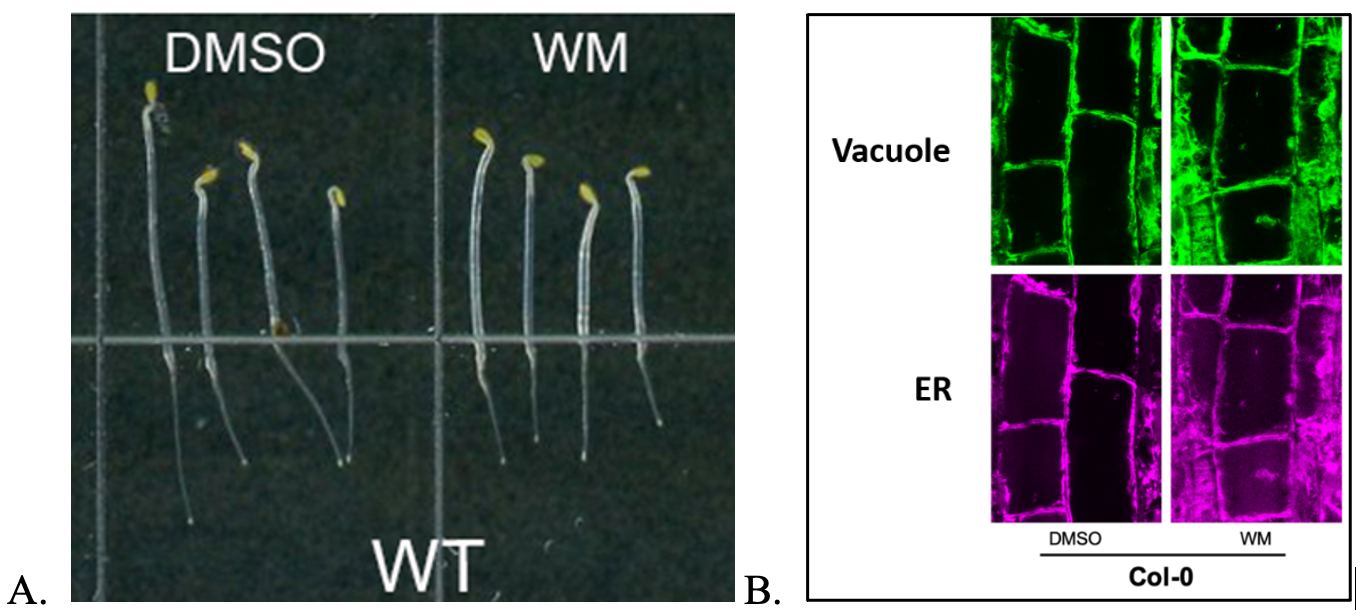Biological Research In Canisters-24 (BRIC-24)
Science Objectives
Biological Research In Canisters-24 (BRIC-24) tests the role of “Membrane Contacts in Plant Gravity Perception” by investigating how space affects organelle contacts and vacuole fusion in plants, systems that may be important for plant gravity sensing and response. Vacuoles are organelles in plant cells that have important functions. This investigation grows two genotypes of Arabidopsis thaliana or thale cress with fluorescent markers for direct imaging of the organelles back on Earth.
Status
Experiment will launch to the International Space Station (ISS) on SpaceX CRS-22 Commercial Resupply Service mission on June 3, 2021.

Experiment Description
The overall goal of the BRIC-24 investigation is to identify molecular mechanisms that mediate the perception of gravity and initiate the signal transduction pathway ultimately driving organ bending. This study focuses on cellular membrane contracts and vacuole fusion to identify cellular and subcellular responses to spaceflight that cannot be predicted from established transcriptomic and proteomic datasets. To test the hypothesis that organelle contacts among the vacuole, endoplasmic reticulum (ER) and amyloplasts are important for plant gravity sensing and response, two Arabidopsis thaliana genotypes carry fluorescent markers for the vacuole membrane and the ER are used so that these organelles can be imaged directly in the same cells after return to Earth.
The investigation uses Biological Research In Canister (BRIC) – Petri Dish Fixation Unit (PDFU) flight hardware and consists of exposing both genotypes to either buffer control or 33uM wortmannin three days after germination. After a two-hour short exposure to these chemicals, specimens are fixed in a paraformaldehyde solution, refrigerated in-orbit, and returned to Earth. Post-flight analysis involves tissue clearing with Clearsee, and imaging in a confocal microscope. The quality of specimen preservation is assessed by visualization of cellular morphology and organelle integrity. Seedlings with good preservation are used to determine the effects of microgravity on: 1) Vacuole morphology; 2) Amyloplast association with the ER and vacuole; and 3) Vacuole fusion as triggered by wortmannin. This investigation will also test the feasibility of chemical inhibitor treatments for cell biology on the ISS. Ground controls are treated in a similar manner throughout the investigation.
The data obtained from BRIC-24 could significantly advance our understanding of gravity sensing in plants by defining the function of subcellular organelles during gravitropism. The contributions are important for future design strategies to improve plant growth in space, where plants encounter altered gravity and crop productivity is essential for human exploration.
Related Links
Space Station Research Explorer - Biological Research In Canisters-24




